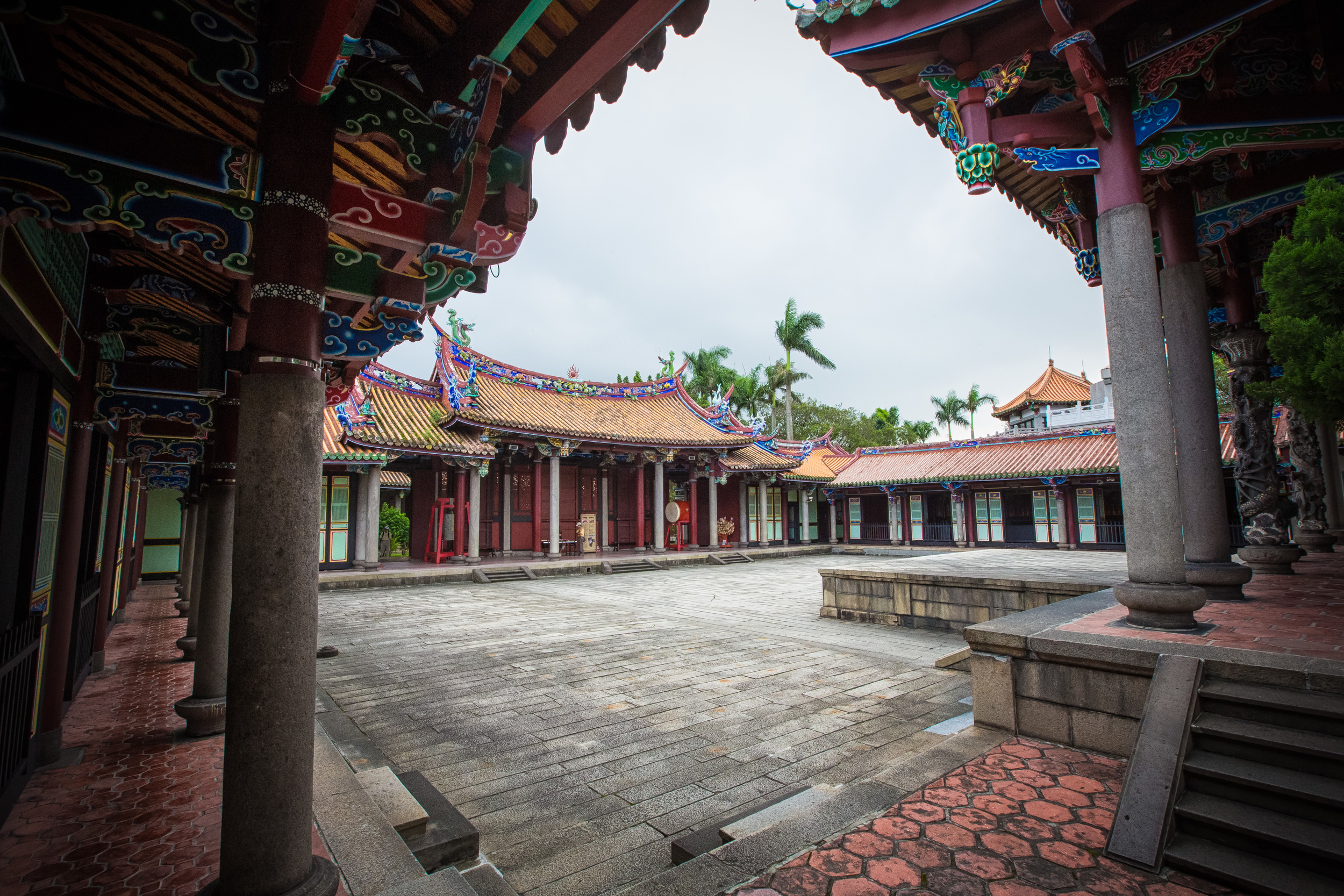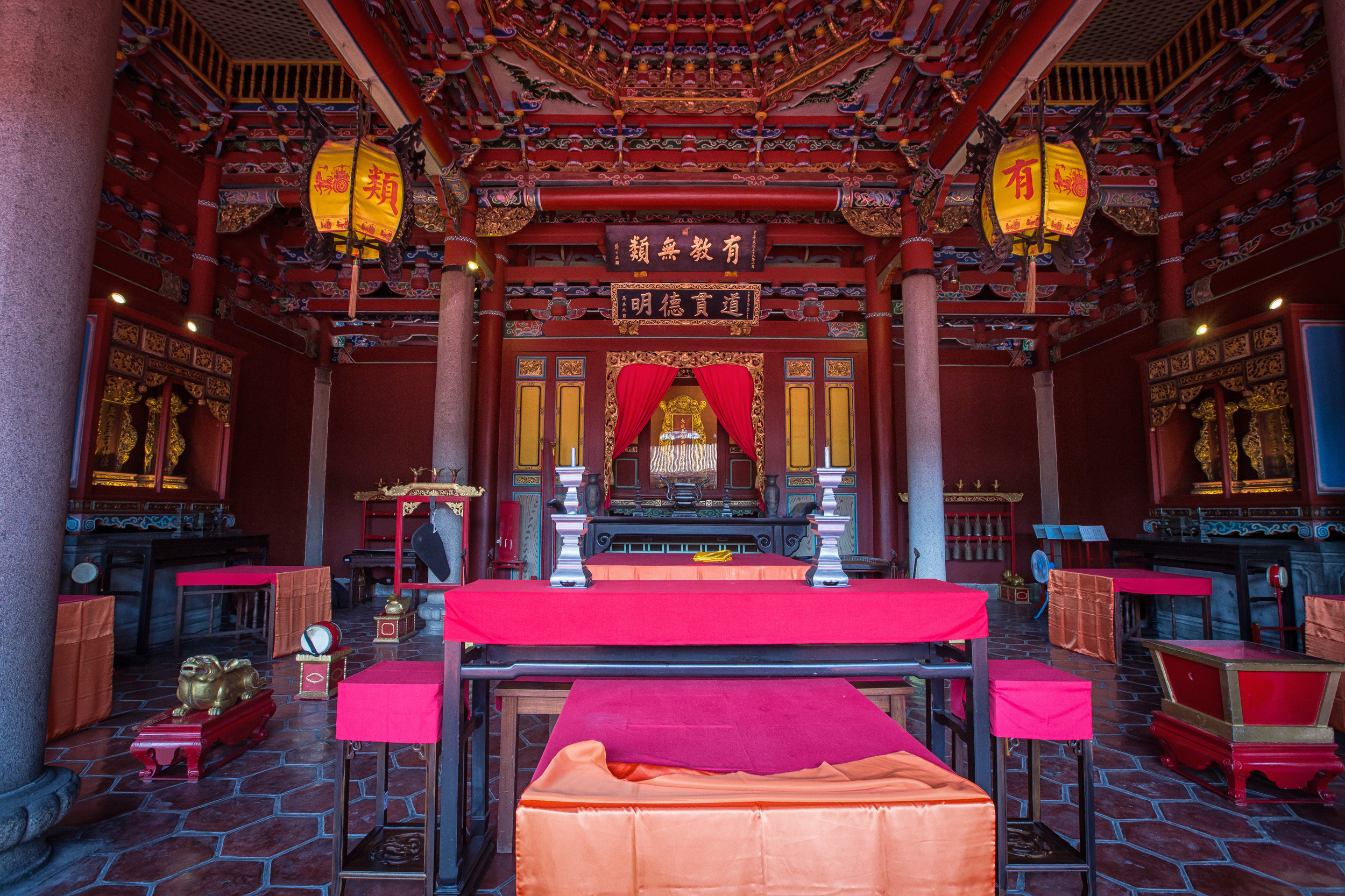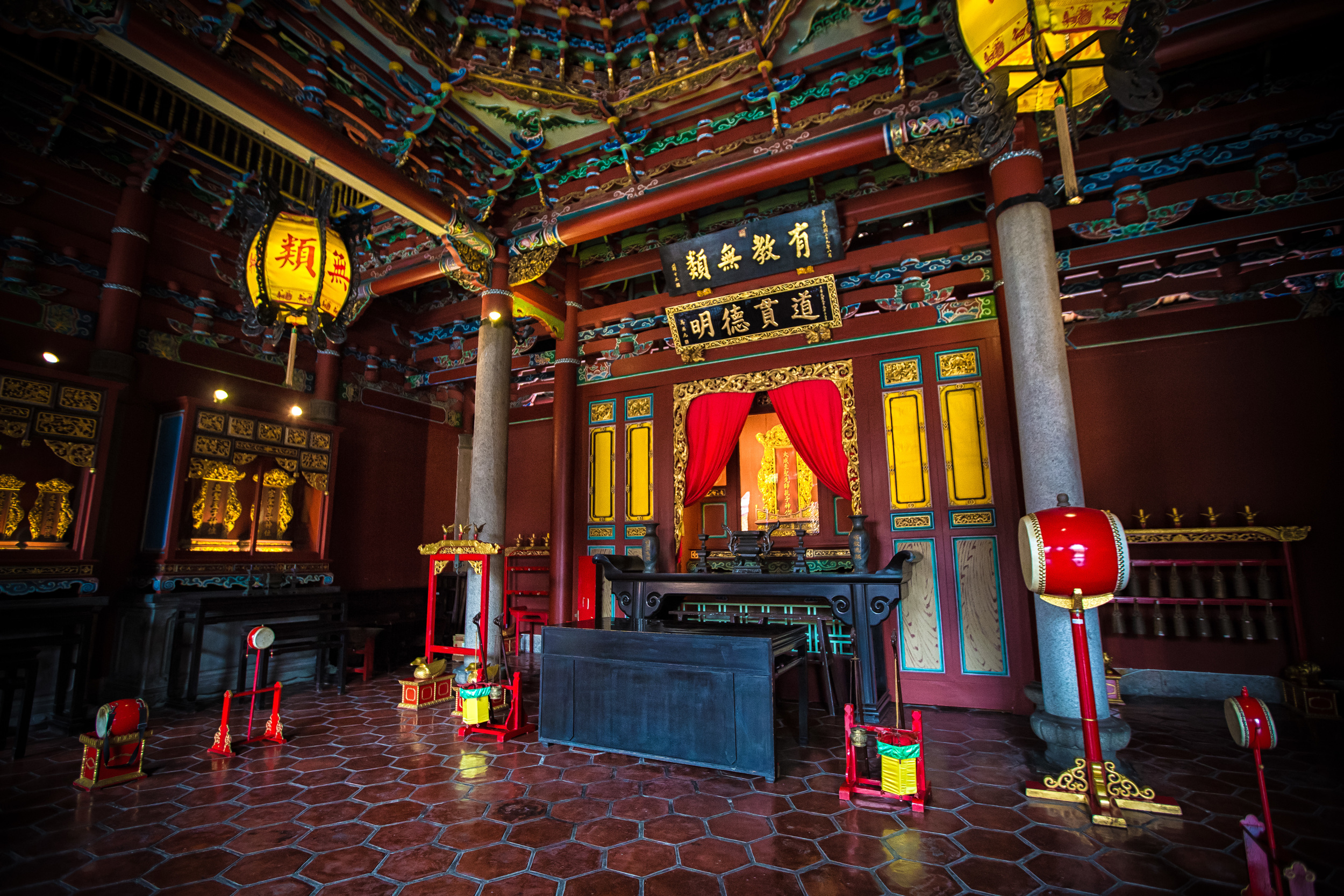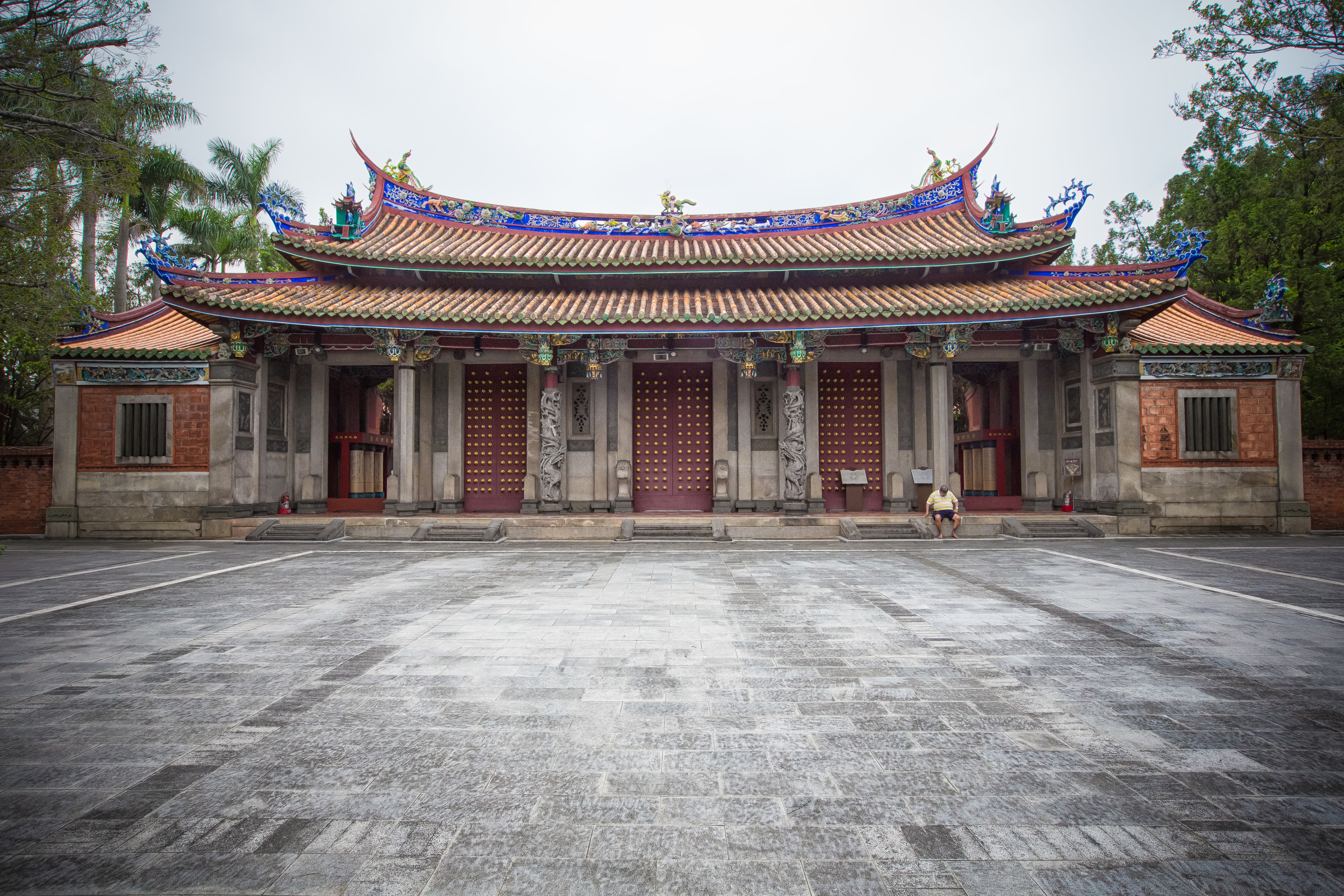The Confucius Temple in Taoyuan is one of the newest temples dedicated to the sage in Taiwan and while it may not have the history as the temple in Taipei, Tainan or Hsinchu, it does offer a pretty great balance in terms of beauty and the natural environment that surrounds it.
This is probably my favourite Confucius temple in Taiwan and I don't say that just because I live in Taoyuan, I say it because of the size of the temple, the beautiful colours, the open space and of course the natural environment that surrounds it.
With this post I'm not going to go into as much detail as I did with my post about the Taipei Confucius Temple as the this one isn't as significant historically to Taiwan, but I will take bits and pieces from the post about Taipei's temple to explain some of the aspects of this temple that are similar to other Confucius temples found throughout Taiwan.
For a bit of history though, the Taoyuan Confucius Temple was constructed in 1989 and like other Confucius Temples it consists of a Dacheng Hall (大成殿), Dacheng Gate (大成門), Lingxing Gate (櫺星門) and a Chongsheng Hall (崇聖祠). The temple follows the same strict zen-like simplicity that you see in other temples but for me this one stands apart in the beautiful reds that are on the pillars and around the temple.
The key difference between this temple and other temples found throughout Taiwan though is that this is only Confucius Temple that has a statue of the sage himself. Since the Ming-Dynasty it has been tradition for temples dedicated to the memory of Confucius to only have spirit-tablets (神位) within the confines of the temple.
This temple splits from tradition and while the statue of Confucius isn't in the main shrine room I was quite surprised while walking along the side halls and seeing a giant statue of the sage looking right at me.
If you haven't read my previous blog about the Taipei Confucius Temple, I'm just going to explain briefly below the different parts of the temple and what is their purpose:
Dacheng Hall (大成殿)
Dacheng Hall is the main shrine area of any Confucius temple. The hall, which is known in English as the "Hall of Great Achievement" sits in the architectural centre of the entire complex and is also in the middle of a large granite courtyard. Inside the hall is a very simple set up with the Confucius spirit tablet set up on a nicely decorated table.
The table in the Taoyuan temple is quite a bit more ornate than other temples but pretty much remains similar to all of the other Confucius temples in Taiwan. There are an additional two shrines in the room found upon the west and east side walls and are dedicated to the four sages (四配) Yan Hui (顏子), Zengzi (曾子), Zisi (子思子) and Mencius (孟子) who were Confucius scholars and authored books which continued the philosophy.
Lingxing Gate (欞星門)
The Lingxing Gate acts as the main entrance to the temple - It's a necessary part of any Confucius temple and symbolizes Confucianism's 'willingness to accept anyone with talent and virtue'. The gate at the Taoyuan temple is much different than what you see at the Taipei temple and despite a different set of colours it looks like a gate that you'd likely see in front of any large temple in Taiwan. The gate sits directly beside the road and welcomes people in a grand way to visit the temple. While standing under the gate make sure to look up and enjoy the beautiful detail on the 'roof' part of the gate.
Chongsheng Shrine (崇聖祠)
The Chongsheng Shrine is situated behind the main Dacheng Hall and is used as a shrine room to venerate the ancestors of Confucius as well as the various Confucian sages and philosophers throughout history. This shrine room is not unlike a shrine room that you'd find in any large Taiwanese home and is an important place for ancestral worship.
The descendants of Confucius have spread out throughout China, Taiwan and Korea so it's important for them to have a place to worship. The shrine room isn't often open to visitors but you can look through the windows to see inside and if it is open you can walk in and see a smaller shrine room that is quite similar to the much larger shrine in Dacheng Hall.
Confucius Ceremony
Every year on September 28th the nation celebrates what is known as "Teachers Day" (教師節) which in actuality is the birthday of Confucius. Teachers Day is the most important and also the most active day of the year at Confucius Temple's all around the country. The ceremony that takes place at the temple each year pays homage to the most important educator in Chinese history but also pays homage to all the teachers who work tirelessly to educate the students of this country.
Confucius's philosophy of "educating all without discrimination, and teaching students according to their talent" is a core value of the education system in Taiwan and no matter what issues I have with the system that is in place in Taiwan, it is an admirable quality that no one with a sincere desire to learn, no matter what their class or character is given the opportunity to receive an excellent education. The Confucius Memorial Ceremony is an elaborate event that celebrates a tradition that deserves a lot more attention than a short description, so I hope to be able to attend the ceremony this year and give a better description of it!
It's hard after so much research on these temples to say that I have a particular favourite - The Taipei Temple has a history intertwined with modern Taiwan and the fusion of traditional architecture with southern architecture is quite cool. The Tainan temple is the oldest temple of its kind in Taiwan and the massive trees around the temple make it a sight that shouldn't be missed.
For me, I like that the Taoyuan temple is so large that it dwarfs the others - I like that it is nestled into the side of Tiger Head Mountain (虎頭山) with hiking trails and wildlife all around it. I love the large red pillars within the temple as well as the large opens spaces inside that make it extremely easy for a photographer to get beautiful shots especially since the temple is rarely very busy.
It's obviously not a competition to say which one is the best, but the Taoyuan temple has a special place in my heart because of all the factors I listed above. It's not convenient to get to and it's certainly not the popular tourist attraction that the other two are and at times it seems like parts of the temple aren't properly taken care of, but that shouldn't stop you from trying to check it out if you're in the area!
For more information about Taiwan’s Confucius Temple’s please check out my Confucius Temple Guide.












































